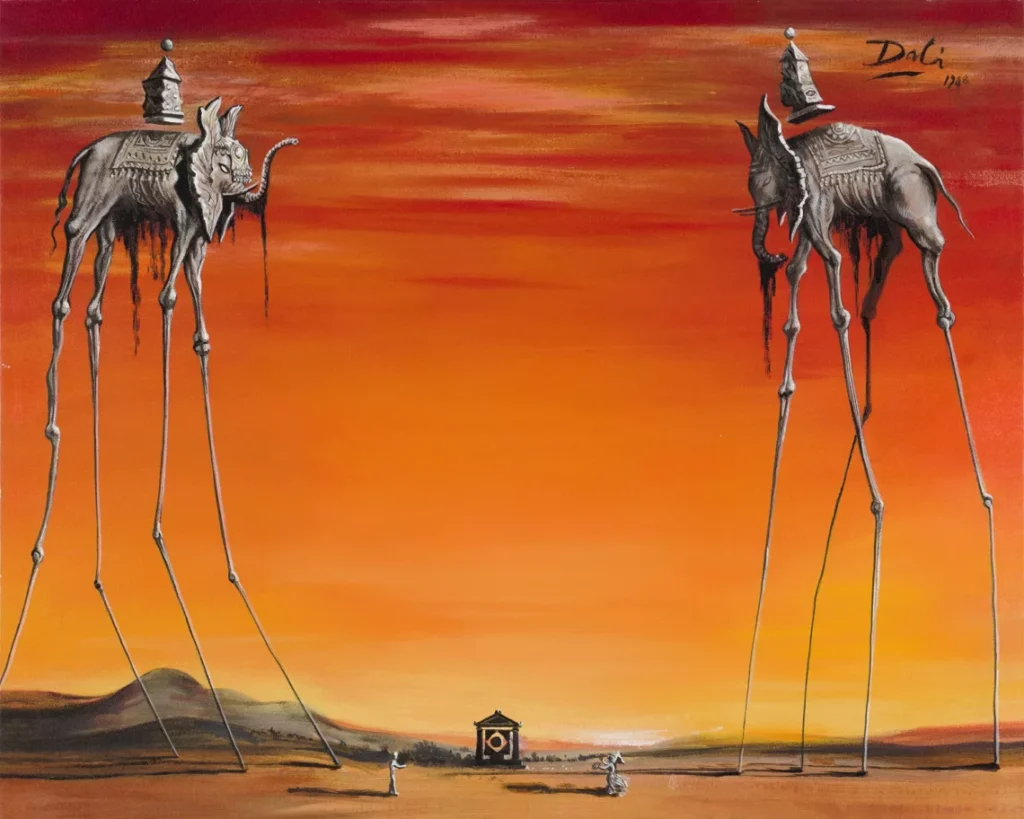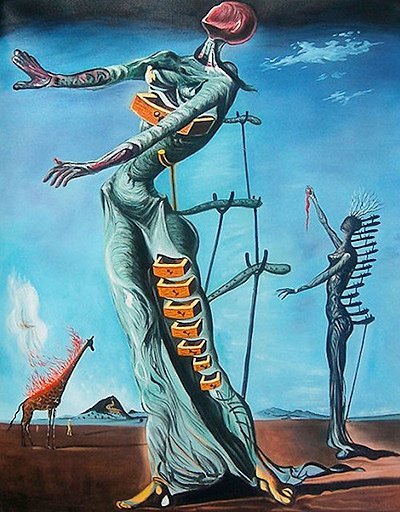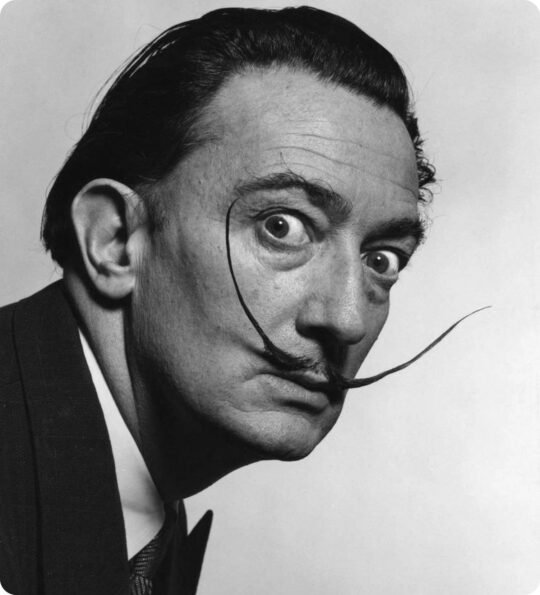Salvador Dalí is one of the most famous and influential figures in the world of art. Known for his eccentric personality and mind-bending works, Dalí’s creativity was as surreal as his paintings. His ability to blend the real and the fantastical, while mastering classical techniques, made him a pioneer in the Surrealist movement. In this blog, we’ll explore Dalí’s craftsmanship, his unique approach to painting, and how his art continues to captivate the imagination of audiences worldwide.

Dalí’s Artistic Vision:
Dalí was not just a painter; he was a master of visual storytelling. His art is often filled with dreamlike imagery, bizarre landscapes, and distorted figures, drawing the viewer into a world where logic and reality take a backseat to fantasy and subconscious exploration. Dalí’s exploration of the unconscious mind was deeply influenced by Sigmund Freud’s psychoanalysis, which allowed him to create works that challenged traditional concepts of reality.


Dalí famously said, “I don’t do drugs. I am drugs.” His works were driven by the idea that the subconscious was as real and valid as the physical world. This philosophical foundation allowed him to depict subjects and scenes that were beyond ordinary perception.
“Surrealism is destructive, but it destroys only what it considers to be shackles limiting our vision.”
Salvadori Dali
The Craft of Dalí: Dalí’s craftsmanship was rooted in a deep understanding of classical techniques, but he used them in entirely innovative ways. He was an exceptional draftsman and had a profound grasp of the technical aspects of painting. His mastery of light, shadow, and perspective set him apart from other artists of his time. In fact, Dalí’s skill in creating hyper-realistic textures and depth made his surreal images feel almost tangible, adding a layer of shock and awe to his work.
One of Dalí’s most famous techniques was his use of the “paranoiac-critical method,” which involved interpreting the world through the lens of paranoia. This allowed Dalí to see hidden images within ordinary objects, creating multiple interpretations of the same scene. His painting “The Persistence of Memory,” with its melting clocks draped over barren trees and distorted landscapes, is a prime example of this technique.
Symbolism and Surreal Imagery: Dalí’s works are rich in symbolism, with objects and figures often serving as metaphors for complex psychological states. The iconic melting clocks from “The Persistence of Memory” represent the fluidity and relativity of time, while other recurring symbols—such as ants, crutches, and eggs—are open to interpretation, often linked to themes of decay, desire, and birth.
Dalí’s fascination with the subconscious is most apparent in his dream-like compositions, where reality is distorted and altered in ways that reflect the mind’s inner workings. The combination of precise technical skill with wild imagination is what makes Dalí’s work both perplexing and mesmerizing. For Dalí, reality was not fixed; it was fluid, mutable, and subjective.
Dalí’s Surrealistic Legacy: Dalí’s influence on modern art and popular culture is immeasurable. His ability to merge technical mastery with imaginative visions revolutionized the way people saw art. His work extended beyond painting to include sculpture, photography, and even film. He collaborated with filmmakers like Luis Buñuel, creating surreal short films such as Un Chien Andalou that pushed the boundaries of cinema.
Dalí’s playful and sometimes provocative nature made him a larger-than-life character, both in the art world and in public life. His eccentric behavior, signature mustache, and larger-than-life persona only added to the allure of his work. His legacy lives on today in the vast number of exhibitions, museums, and films dedicated to his work.
The Impact of Dalí’s Craftsmanship: Dalí’s art remains a source of fascination, not only for its surreal imagery but also for its intricate craftsmanship. His ability to fuse the techniques of the old masters with his own brand of visual chaos made him one of the most unique artists in history. His paintings encourage viewers to think beyond the limits of the physical world and explore the realms of imagination, dreams, and the subconscious.
Dalí once stated, “The secret of my influence is that I have never done anything on the basis of something that has already been done.” His relentless pursuit of originality and his desire to challenge the norms of art continue to inspire countless artists around the world.
Conclusion: Salvador Dalí’s work is a testament to the power of imagination and the limitless possibilities of artistic expression. His craftsmanship, combined with his visionary approach to surrealism, made him a true pioneer in the world of modern art. Dalí’s legacy is not only defined by his art but also by his ability to open new doors in the exploration of the human mind and the unconscious. His works remain iconic and continue to challenge our perceptions of reality.

